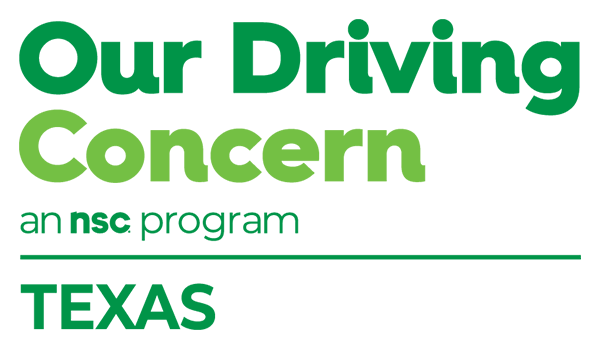Go the Distance
Join us during Rural Road Safety Awareness Week (July 17-21) as we focus on ways to improve travel safety – from culture to behavior change – for all Texas road users. The National Center on Rural Road Safety has designated a theme for this year’s observance: What’s Speed Got to Do With It?
The Center will make free resources available to safety leaders and community safety advocates upon completion of its Great American Road Trip. You are invited to follow along and share what you learn during a unique workweek safety journey. Get information on the following topics, then download free resources to assist with ongoing training at your location:
- Monday, July 17: Rural speed challenges
- Tuesday, July 18: Why speed management is important
- Wednesday, July 19: Speed countermeasures for rural roads
- Thursday, July 20: Incorporating speed into your local road safety plan
- Friday, July 21: Building a culture of safe speeds
In Texas, 51% of traffic fatalities occurred in rural areas in 2021, according to the Texas Department of Transportation. One factor in crash outcomes: The distance to the nearest trauma center.
How many of your drivers haul goods across the state? How many of your employees soon will be driving through rural areas on their way to a summer vacation destination? Does everyone buckle up on every trip?
According to a 2022 National Highway Traffic Safety Administration report on rural/urban crash fatalities:
- 19% of the U.S. population lives in rural areas
- 31% of total vehicle miles traveled are in rural areas
- 43% of all traffic fatalities occur in rural areas
How can you help keep your employees and their family members safe? Use these tools to build or improve on an existing culture of safety:
Many truckers and those in the oil and gas sector have used journey management plans for years as a way to reduce transportation-related safety risks, particularly in high-risk rural areas like the Permian Basin. Now you can offer our free online training to everyone on your team:
The 20-minute course introduces journey management principles and presents several scenarios that contrast best practices and poor planning. Start with a plan for safe driving. Provide education on everything from distraction to fatigue. End with safer roads for all.

Buffer Zone
During July, the National Highway Traffic Safety Administration is focusing safety efforts on its Speed Prevention campaign. Here’s why:
Speeding-related crash fatalities have risen in recent years despite advancements in safety technology, like lane departure warning, automatic emergency braking and seat belt reminders. In 2020, NHTSA data shows:
- Speeding was a factor in nearly one-third of all fatal crashes in the U.S.
- 11,258 people were killed in speeding-related crashes nationwide – more than 30 deaths every day
Get these free resources to help amplify the NHTSA campaign on your social channels and through digital communications. Take the lead to keep your employees and their family members safe:
Road safety is an essential part of a well-rounded workplace safety culture. Crashes lead to increased costs and can result in greater liability exposure. Productivity declines when workers miss time on the job because of an incident. Prioritize safe driving. Use our free tools to help.
Start your next team meeting by playing this 1-minute driver-behavior safety series video. Be sure to note there are times when even the posted limit might be too fast (inclement weather, nighttime driving):
Then, make use of these additional free resources to boost your efforts:
- Safety posters (address aggressive driving)
- Driver behavior micro e-learning (including a module on aggressive driving)
- Driver safety games (Speedway)
- Safety Huddles (Speed)
In Texas, unsafe speed was a contributing factor in 27,255 crashes in 2021, according to the Texas Department of Transportation. That’s nearly 75 crashes every day, or slightly more than three crashes every hour of every day.
Let’s work to bring that number down to zero.

